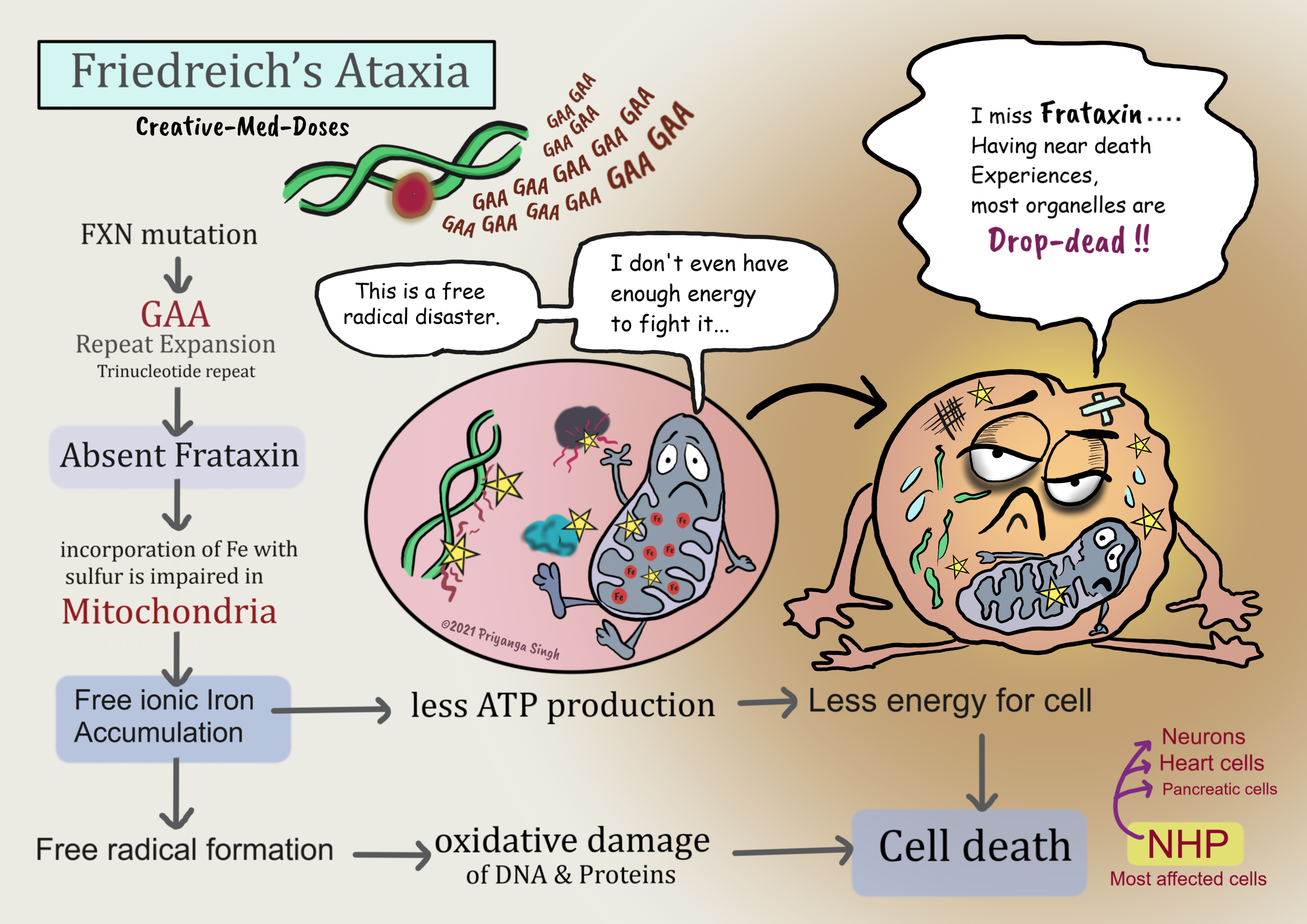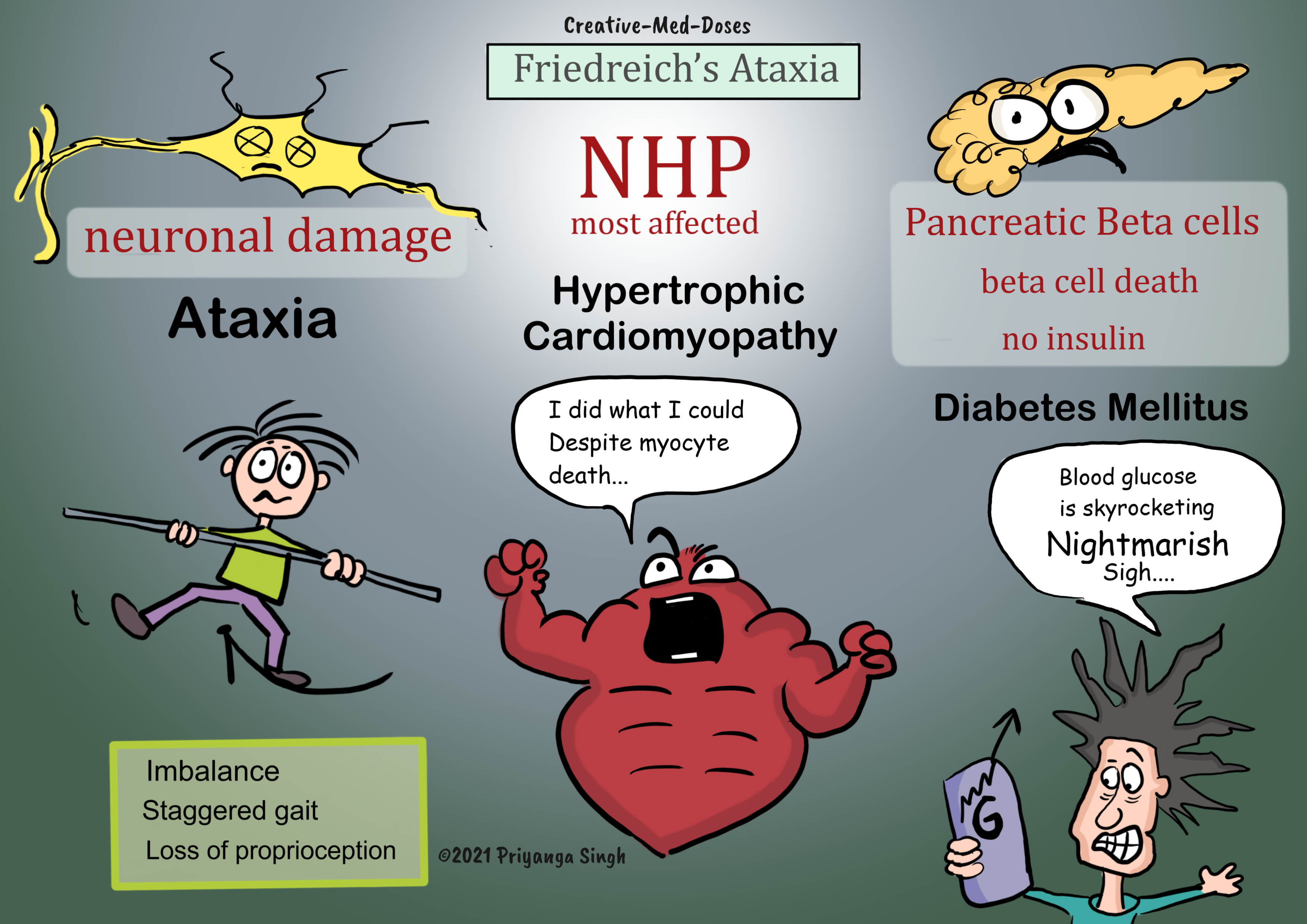Friedreich’s ataxia: absent frataxin
Friedreich’s ataxia is the most common form of inherited ataxia. It has congenital impairment of mitochondrial function leading to cerebellar and spinal cord atrophy and neurodegeneration.
It can occur in two clinically indistinguishable forms.
- Classic form
- Association with a genetically determined vitamin E deficiency syndrome
Pathophysiology
There is a mutation of the FXN gene at chromosome 9, which encodes for frataxin. The mutated gene contains expanded GAA triplet repeats which silence the gene expression, so frataxin is absent.
Frataxin is a mitochondrial protein involved in iron homeostasis. Mitochondrial iron accumulation due to loss of the iron transporter coded by the mutant frataxin gene results in oxidized intramitochondrial iron. Excessive oxidized iron forms free radicals and causes oxidative damage to cellular components. This oxidative damage causes DNA damage and protein denaturation, and irreversible cell injury.
The most affected cells are NHP-
N- Neuronal cells- ataxia, loss of proprioception, absent deep tendon reflexes, and nystagmus
H- Heart cells (cardiac myocytes) – the death of myocytes leads to fibrosis and compensatory hypertrophy of remaining cells (hypertrophic cardiomyopathy)
P- Pancreatic cells- the death of beta cells lead to insulin deficiency and diabetes mellitus
...

....
Clinical features
Friedreich’s ataxia presents before 25 years of age.
- progressive staggering gait (Lower extremities are more severely affected)
- frequent falling
- titubation
- Dysarthria
- Ataxia of trunk and limb movements
- DTR absent
- Loss of proprioception
- Hypertrophic cardiomyopathy
- Diabetes mellitus associated with insulin resistance and Pancreatic β-cell dysfunction.
- Musculoskeletal deformities - pes cavus, pes equinovarus, and scoliosis.
...

...
Diagnosis
- Genetic testing
- MRI shows spinal cord and cerebellar atrophy
Treatment
No cure and no treatment which can slow or halt disease progression
Physical therapy helps in maintaining muscle tone and function.
Prognosis
Death in adolescence most commonly due to cardiac arrhythmia and hypertrophic cardiomyopathy
Revision for today Restrictive Cardiomyopathy: Stiff Ventricles - Creative Med Doses
Buy fun review books here (these are kindle eBook’s you can download kindle on any digital device and login with Amazon accounts to read them). Have fun and please leave review.
https://creativemeddoses.com/books/